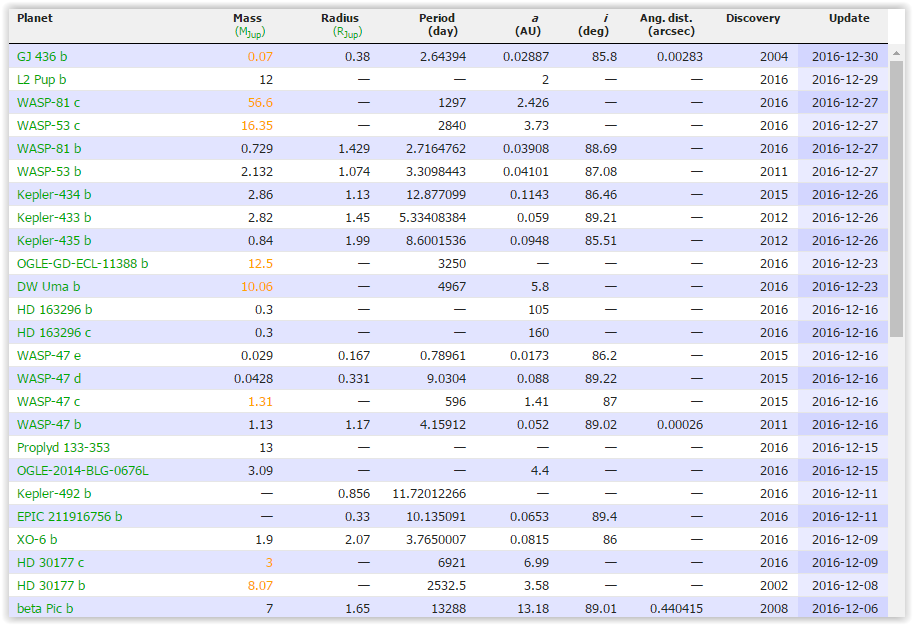

| Online: | |
| Visits: | |
| Stories: |

| Story Views | |
| Now: | |
| Last Hour: | |
| Last 24 Hours: | |
| Total: | |
Proof of Extraterrestrial Life Outside of Our Solar System
Follow TIS on Twitter: @Truth_is_Scary & Like TIS of Facebook- facebook.com/TruthisScary
elevenaugust via abovetopsecret.com
Okay, where to begin?
With this paper, I want to demonstrate that we are probably living in the most important century for the humankind, as (and this is not only a strong intuition) there’s no doubt in my mind that the final proof of extraterrestrial life will be found within the century.
Indeed, as scientific technology progress nowadays in an exponential way, there is an increasing volume of clues that undoubtedly shows that we will not have to wait anymore longer for the outside of solar system to emerge.
1- EXTRASOLAR PLANETS DETECTION HISTORY
– Since the first published, confirmed discovery made in 1988 (Gamma Cephei A planet) by the Canadian astronomers Bruce Campbell, G. A. H. Walker, and S. Yang, there was an increasing numbers of discoveries. In 2011, the exoplanet catalog, regularly updated, contained 548 confirmed planets. Today, it is no less than 3557 confirmed planets, 2668 planetary systems and 601 multiple planet systems that were discovered.
Almost each week, a new planet is discovered and/or confirmed… It’s even became mundane:

2- EARTH-LIKE PLANETS
At the same time, the number of exoplanets that have an ESI (Earth Similarity Index) similar to that of the Earth increased as well, especially with the discoveries of Kepler-438b (discovered in 2015, ESI 0.88, thought it is apparently not habitable) and of Kepler-62e (discovered in 2013, ESI 0.83).

We also have to think about the fact that Mars has a 0.797 ESI, which is less than the two best Kepler candidates named above, and yet we think about a possible past (and even current) life on Mars.
Also, in order to really put things in perspective, a scientist team estimated (2013, november) that 22±8% of Sun-like stars in the Milky Way galaxy may have an Earth-sized planet in the habitable zone. Assuming 200 billion stars in the Milky Way, that would be 11 billion potentially habitable Earths, rising to 40 billion if red dwarfs are included. (!!) And only in our galaxy…
3- EXOPLANETS IN THE HABITABLE ZONE OF THEIR STAR
Since the launch of Kepler in 2009, the scientists have doubled the number of known exoplanets smaller than the size of Neptune. A hundred are smaller than 1.2 times the size of the Earth and even 21 are twice this same size, in the habitable zone of their star.
Nine of these have been validated (2016, May) and are plotted as orange disks in the map below. The previous known planets are marked as blue disks.

These planets are plotted relative to the temperature of their star and with respect to the amount of energy received from their star in their orbit in Earth units. The sizes of the exoplanets indicate the sizes relative to one another. The images of Earth, Venus and Mars are placed on this diagram for reference. The light and dark green shaded regions indicate the conservative and optimistic habitable zone. Credits: NASA Ames/N. Batalha and W. Stenzel
Looking at this map do incite to think that earth-like planets are very common, not exceptional at all, and that the number of their discovery will considerably increase in the near future.
The two updates wiki lists (exoplanets in the “conservative” and in the “optimistic” habitable zone) can be seen here
Source: http://truthisscary.com/2017/01/proof-of-extraterrestrial-life-outside-of-our-solar-system/


